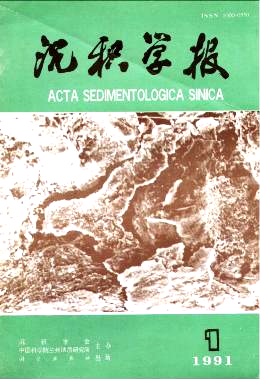Taphonomic Feedback and its Influences on the Reefs' Development
- Received Date: 1988-12-25
- Publish Date: 1991-03-10
Abstract: The accumulation of organisms' dead hardparts can directly influence the structure and dynamic of nature of the sea floor.Biotic changes driven by such lives and dean interactions of living and dead have recently been termed Taphonomic Feedback, acording to Kidwell (1983).The taphonomic feedback stresses (1) the roie of post-mort processes in the availability of hardparts, and (2) that not only does the life assemblage influence the dead assemblage (living Organisms is the source of the dead assemblage), but also the accumulations of the dead assemblage affect the living one (dead hardparts provide the suitable substrata for epibiontic organisms). After those animals and plants which have hard skeletons died, their soft tissues decay very rapidly, and their skeletons will be disarticulated and fragmented by current, wave, storm and bioturbation.The discarded skeletal materials can change the physical characteristics of benthic habitats through providing 'island of hard substrata in soft-bottom habitats to some epibionts (e.g.encrusting and boring organisms) With hardpari accumulations in abundance, the sea floor will be transformed into a coarser, firmer and topographically more comple benthic habitat. Many coarse substratumlike, firm substratum- like and hardground-like epibionts, such as encrusting organisms (including animals and plants), can settle down and develop on it.It is one of the importaftt factors that cotrols the development and distribution of reefs and bioherms.Here the paper goes into details on this field, according to the informations got from home and abroad. Generally, although the development of reefs and bioherms is controlled by the temperature, salinity, depth and turbidity of water, wave activity, nutrient nature, sedimentation rates and so on, the substrata, which controlling the development of reef stabilization, are also very important.lt has been overlooked by many authors. Usually, the pioneer communities of reefs and bioherms develop on the petrological hardgrounds (e.g.many modern reffrs settling on the dead and or crmant volcanos in South Pacific), or on the biological hardgrounds whi, are made by encrusting organisms on the surface of biociastic banks of some bioherms (e.g.many Paleozoic and Mesozoic reefs, some modem reefs. The biological hardgrounds as the settling svbstrata are very commonfor the reefs and bioherms during geological time in China ( See Table). Because many Paleozoic reefs and bioherms deve'oned on the bioclastic banks mainly concentrated by current and wave activity from dead hardparts on carbonate plateform. the pioneer organisms of those reefs and bioherms, such as encrusting bryozoans, encrusting stromatopora, encrusting sponges, some cocals, spongiostromas, encrusting foraminiferas and some bivalves. cncruste on the bioclastic banks, made biological hardgrounds for other reef-building organisms to colonize. Most often the reefs and bioherms have bioc'as'ic banks as their settling bases, which process shown the taphonomic feedback influpnce. The authors have investigated one of the carly Silurlan coral-stromatoporoids reef, which is about 150m thick and located at Guangyean. northwest of Sichuan. and discovered that the reef shows very strong taphonomic feedback control.The develonment of this recf can be divided into two petiods, the stabilization of the first period is on the biological harground encrusting by some favosites and stromatoporcids on biocl astic bank, the rcef become more and more largcr ti the end of the stabilization. The second period is on the tidal-flat sediments with firm substraturn characteristics. it shows somehnos petrological hardground nature.The Bryczoan-coral reefs of early Carboniferons. locatcd in Tianling. Guangxi. also shcwn very strong taphonomic feedback influence.
| Citation: | Zhang Tingshan, Fang Shaoxian, Hou Fanghao, Luo Qiang. Taphonomic Feedback and its Influences on the Reefs' Development[J]. Acta Sedimentologica Sinica, 1991, 9(1): 27-34. |






 DownLoad:
DownLoad: